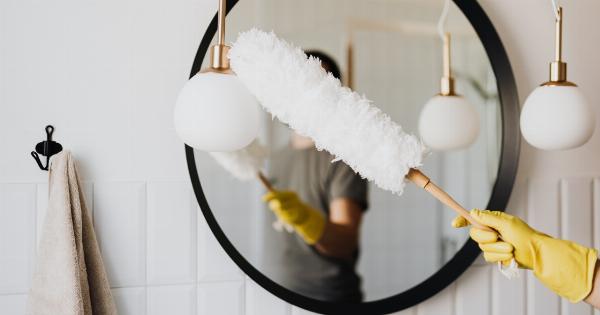Our bathrooms are supposed to be a sanctuary where we can cleanse and refresh ourselves. However, little do we know that there are toxins lurking in this seemingly harmless space.
These toxins, if not properly addressed, can pose serious health risks to us and our loved ones. In this article, we will shed light on the top five toxins that are putting your health at risk in the bathroom.
1. Mold and Mildew
Mold and mildew are common problems in bathrooms, especially in areas with high humidity. These fungi thrive in damp environments, releasing spores that can trigger allergies and respiratory problems.
Prolonged exposure to mold and mildew can lead to asthma attacks, allergies, and other respiratory conditions.
2. Volatile Organic Compounds (VOCs)
Volatile Organic Compounds or VOCs are chemical compounds commonly found in bathroom cleaning products, air fresheners, and aerosol sprays.
These compounds can cause irritation to the eyes, nose, and throat, and may even trigger headaches, dizziness, and nausea. Long-term exposure to VOCs has been linked to various health issues, including liver and kidney damage.
3. Phthalates
Phthalates are a group of chemicals commonly used as plasticizers in personal care products, such as shampoo, shower gel, and lotions. These chemicals can disrupt the endocrine system, leading to hormonal imbalances.
Phthalates have also been associated with reproductive issues, developmental problems in children, and an increased risk of certain types of cancer.
4. Chlorine
Chlorine is a commonly used disinfectant in tap water and swimming pools. While it helps kill bacteria, prolonged exposure to chlorine in the bathroom can have harmful effects on our health.
Inhalation of chlorine gas can irritate the respiratory system, cause coughing, and trigger asthma attacks. Chlorine has also been linked to skin and eye irritation, as well as certain types of cancers.
5. Antibacterial Products
Antibacterial products, such as soaps and hand sanitizers, often contain triclosan and triclocarban. These chemicals have been widely used as antimicrobial agents but have raised concerns due to their potential impact on human health.
Studies have shown that triclosan may disrupt hormone function, weaken the immune system, and contribute to the development of antibiotic-resistant bacteria.
How to Reduce Your Exposure
Now that we are aware of the toxins lurking in our bathrooms, it’s crucial to take steps to reduce our exposure and protect our health:.
1. Maintain Proper Ventilation
Proper ventilation is essential in reducing moisture and preventing the growth of mold and mildew. Use exhaust fans or open windows to ensure a good airflow in your bathroom. This will help remove excess humidity and keep the environment dry.
2. Use Natural Cleaning Products
Avoid using harsh chemical-based cleaning products that contain VOCs. Opt for natural alternatives such as vinegar, baking soda, and lemon juice. These natural substances can effectively clean your bathroom without exposing you to harmful toxins.
3. Read Product Labels
Before purchasing personal care products, read the labels and avoid products that contain phthalates and other harmful chemicals. Look for natural and organic options that prioritize your health and well-being.
4. Install a Water Filter
If your tap water contains chlorine, install a water filter specifically designed to remove this chemical. This will reduce your exposure to chlorine while showering or washing your face and hands.
5. Choose Antibacterial Alternatives
Instead of relying on antibacterial products, practice good hand hygiene by washing your hands thoroughly with regular soap and water. This can effectively eliminate germs without the potential risks associated with triclosan and triclocarban.
Conclusion
The bathroom, a place where we seek cleanliness and relaxation, can unknowingly harbor toxins that put our health at risk.
By being aware of these toxins and taking appropriate measures to reduce exposure, we can create a healthier and safer bathroom environment. Protect your well-being and that of your loved ones by making conscious choices when it comes to the products and practices in your bathroom.































